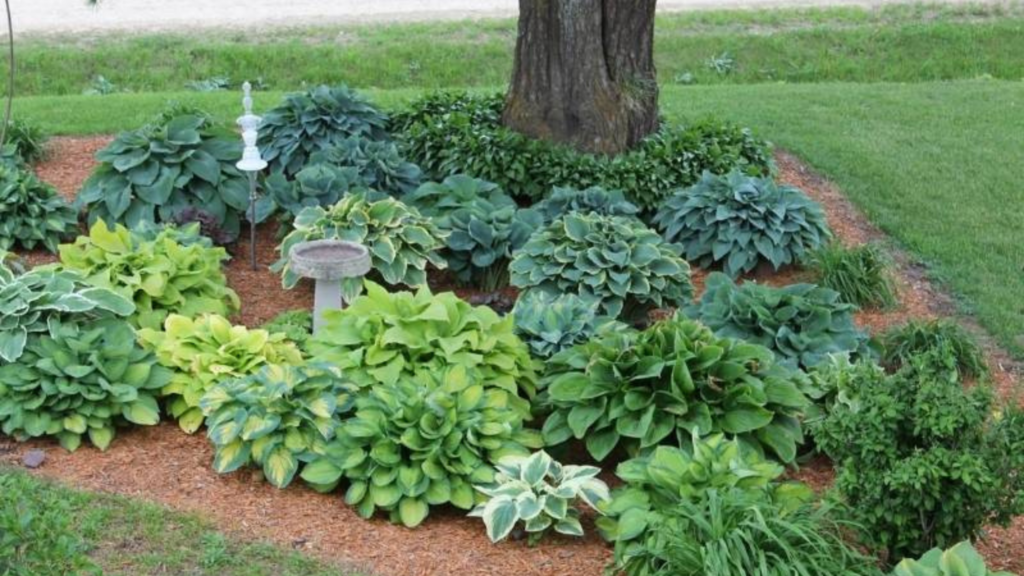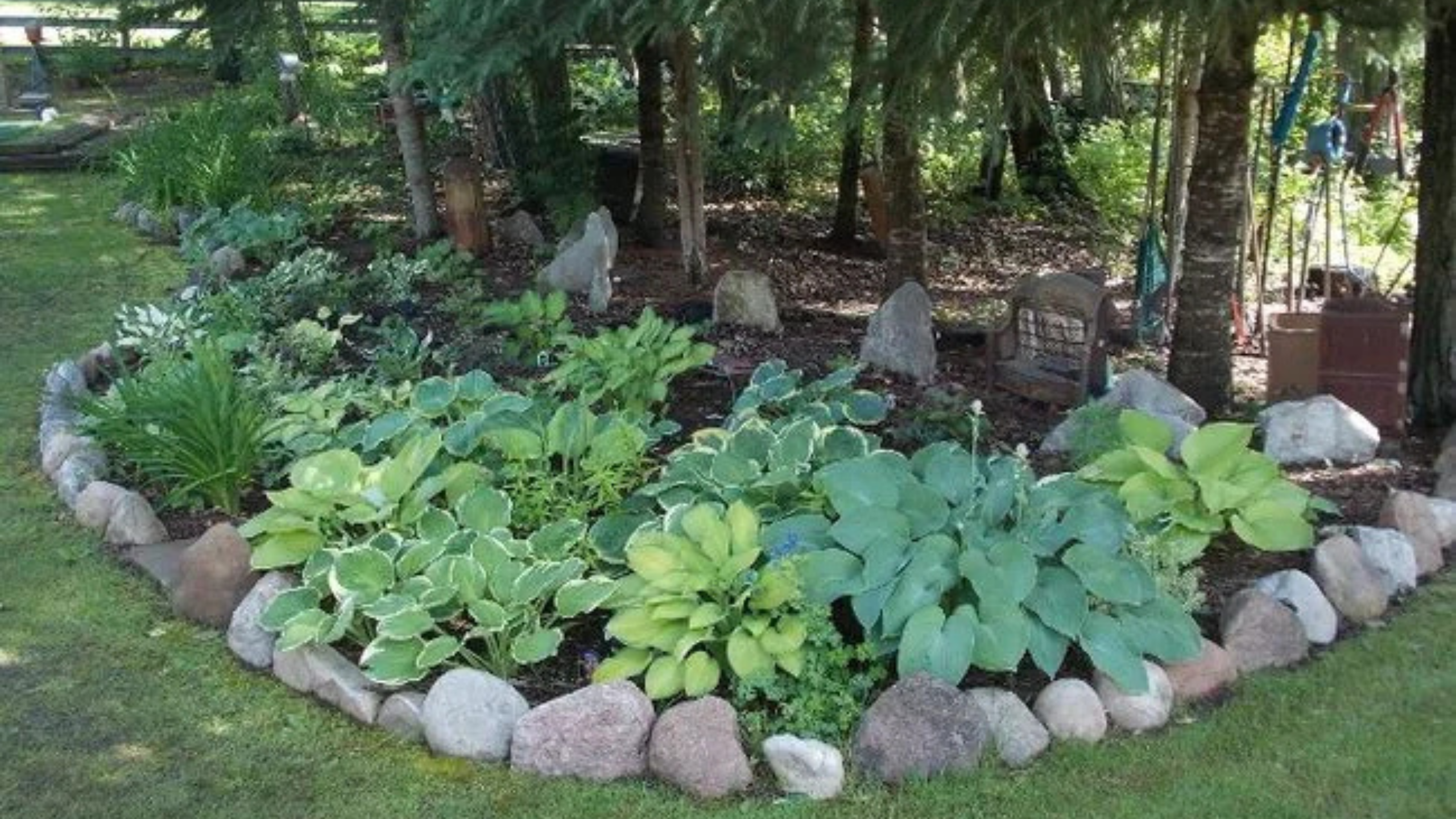If you’re seeking a natural and eco-friendly way to enhance the beauty of your garden, planting beneath trees is an amazing solution. While it may seem daunting to grow plants in such shaded conditions due to competition with tree roots, choosing the right species can make all the difference. This guide introduces you to 25 shade-loving plants that thrive under tree canopies, infusing your garden with lush colors, textures, and even edible surprises.
By incorporating a variety of flowering plants, ground covers, and shrubs, you can cultivate a vibrant and inviting landscape even in the shadow of your favorite trees.
1. Snowberry
Why choose this plant? Snowberry is an underrated shrub that showcases lovely white flowers in spring and produces juicy berries in early fall, providing nourishment for birds and pollinators.
Growing tips: It thrives in both partial and full shade, requires well-draining soil, and is low-maintenance. If you’re interested in unique varieties, consider the Magic Berry Snowberry, known for its striking magenta fruit.
2. Lamium
What makes it special? Lamium is a stunning ground cover characterized by dense green leaves and delicate flowers in shades of pink, purple, or white.
Growing tips: This plant does exceptionally well in deep shade and offers excellent erosion control, making it a great choice for container gardens as well.
3. Anemone
Why grow it? Anemone produces beautiful flowers that brighten both spring and fall with vibrant colors.
Growing tips: Preferring partial to full shade, they thrive in moist, well-drained soil and bloom in various hues including white, pink, and red.
4. Hostas
What’s the appeal? These hardy perennials come in numerous varieties, from small to large leaves, and are perfect for shady areas.
Growing tips: Hostas perform best with occasional watering and well-draining soil. They adapt well to diverse soil types and provide impressive foliage, with some varieties even yielding fragrant flowers in summer.

5. Primroses
Why include them? Primroses are among the first to blossom in spring, bringing cheerful colors to any garden.
Growing tips: These flowers thrive in moist, well-drained soil and prefer partial shade, offering long-lasting blooms in yellow, pink, and purple.
6. Foam Flowers
What should you know? This low-maintenance perennial features delicate blooms and serves as excellent ground cover.
Growing tips: Foam flowers prefer moist, shaded conditions. After blooming, cut them back to encourage fresh growth and attract various pollinators like bees and butterflies.
7. Ninebark
Why choose Ninebark? This hardy shrub offers visual interest with its dark green or reddish leaves and unique peeling bark.
Growing tips: It requires well-draining soil and benefits from occasional pruning. Growing well in both partial shade and full sun, it produces small white or pink flowers in late spring.
8. Columbine
What’s appealing about Columbine? This delicate perennial attracts hummingbirds and bees with its vibrant, nectar-rich blooms.
Growing tips: It flourishes in shade to partial sunlight and blooms in an array of colors, including blue, purple, red, and yellow. Its ability to self-seed easily makes it an excellent plant for naturalizing.
9. Bergenia
Why add Bergenia to your garden? This robust plant features glossy green leaves and clusters of pink or purple flowers, adding boldness to your landscape.
Growing tips: It tolerates poor soil conditions and thrives in both deep shade and partial sun. Bergenia creates lush ground cover with minimal upkeep.
10. Tree Peony
What’s special about Tree Peonies? They produce stunning oversized blooms beneath tree canopies, offering a touch of luxury in shaded areas.
Growing tips: These plants prefer partial shade and well-drained soil. Hardy in zones 4–9, their blooms outlast those of herbaceous peonies, providing weeks of stunning color.
11. Alpine Currant
Why is Alpine Currant a good choice? This hardy fruit-bearing shrub tolerates extreme cold and shade.
Growing tips: It thrives in USDA zones 3–7, prefers partial to full shade, and produces small edible berries that attract birds.
12. Mountain Laurel
What makes Mountain Laurel unique? This broadleaf evergreen produces stunning pink and white flowers in late spring.
Growing tips: It prefers acidic, well-drained soil, thrives in shade or dappled sunlight, and requires occasional pruning to maintain its shape.
13. Hens and Chicks
Why grow Hens and Chicks? This unique succulent thrives in shaded areas while providing excellent ground cover.
Growing tips: Hardy in zones 3–11, it requires minimal watering and works well in rock gardens and shaded spaces.
14. Azaleas and Rhododendrons
What’s their appeal? These flowering shrubs thrive in acidic, shaded soil and display vibrant blooms in spring.
Growing tips: They require a soil pH of 4.4–6 and need consistent moisture, providing a striking burst of color under trees.
15. Sedum
Why is Sedum recommended? This drought-tolerant succulent serves as an attractive ground cover in shaded conditions.
Growing tips: Thriving in zones 3–9, it requires well-drained soil and comes in a variety of colors and textures.
16. Hydrangeas
What’s enticing about Hydrangeas? Known for their large, vibrant flower clusters, they bloom beautifully in partial shade.
Growing tips: Hydrangeas need consistently moist soil, thrive in zones 4–9, and you can adjust their flower color by changing the soil pH.
17. Camellia
Why consider Camellia? This warm-weather shrub enjoys an extended blooming season.
Growing tips: Thriving in zones 6–9, it prefers well-drained, acidic soil and produces vibrant red, pink, or white flowers.
18. Pieris Japonica
What makes Pieris Japonica stand out? This attractive evergreen shrub showcases cascading clusters of bell-shaped flowers in early spring.
Growing tips: Preferring acidic, well-drained soil, it does well in partial to full shade and benefits from occasional pruning.
19. Impatiens
Why are Impatiens a great choice? They are among the best annuals for shaded areas, known for their vibrant, continuous blooms.
Growing tips: They must be replanted annually and thrive in moist, shaded environments while blooming in a variety of colors.
20. Oregon Grape Holly
Why should you grow Oregon Grape Holly? This drought-resistant, shade-tolerant evergreen shrub features unique holly-like leaves and produces yellow flowers.
Growing tips: Hardy in zones 5-9, it also yields edible blue berries and adds structure to shaded landscapes.
21. Begonias
What’s appealing about Begonias? Known for their vibrant colors, these flowers add charm to shaded gardens and bloom throughout the growing season.
Growing tips: They prefer moist, well-drained soil and thrive in dappled sunlight or full shade, requiring regular watering.
22. Coleus
Why add Coleus to your garden? As one of the most colorful foliage plants, it delivers contrast and texture under trees.
Growing tips: Thriving in partial to full shade, it prefers moist, well-draining soil. Pinching back stems encourages bushier growth.
23. Pansies and Violets
What’s the benefit of growing Pansies and Violets? These delicate flowers provide seasonal color and do well in cooler, shaded areas.
Growing tips: They grow best in rich, organic soil, require regular watering, and thrive in partial shade and cooler temperatures.
24. Milkweed
Why is Milkweed important? This pollinator-friendly plant attracts butterflies, especially Monarchs, making it a vital addition to any garden.
Growing tips: It prefers well-drained soil, thrives in partial shade to full sun, and becomes tolerant of dry conditions once established.
25. Lysimachia
What makes Lysimachia noteworthy? Known for its vibrant flowers, this ground cover excels in thriving under shade trees.
Growing tips: It prefers moist, well-drained soil and thrives in shaded areas with dappled sunlight, providing excellent erosion control.
These 25 stunning plants demonstrate that a vibrant and colorful garden is achievable even in the shade of trees. With careful selection and proper care, you can enjoy a lively under-canopy landscape for years to come!


This post sparked a great debate with my friends. Love your thought-provoking content!www.pvps.top As outlined in lfuchi, there are several considerations.